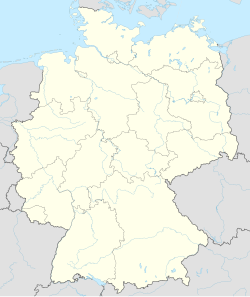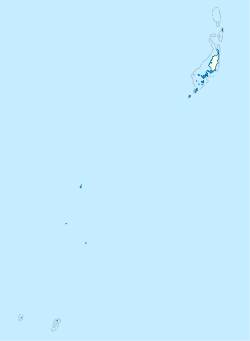포화 돌연변이 유발
Saturation mutagenesis현장 포화 돌연변이 유발(SSM) 또는 단순히 현장 포화상태는 단백질 공학에서 사용되는 무작위 돌연변이 유발 기법으로, 단일 코돈 또는 코돈 세트가 그 위치에서 가능한 모든 아미노산으로 대체된다.[1]현장 포화 기법에는 쌍체 현장 포화(도서관의 모든 돌연변이에서 두 위치를 포화)부터 스캐닝 사이트 포화(단백질 내의 모든 현장에서 현장 포화를 수행하여 가능한 모든 지점 돌연변이를 포함하는 [20 x (단백질 내 잔류물 수)] 크기의 라이브러리를 생성함)에 이르기까지 많은 변형들이 있다.f. 단백질.
방법
포화 돌연변이 유발은 일반적으로 프리머(예: SeSaM)[2]에서 무작위화된 코돈으로 현장 유도 돌연변이 유발 PCR 또는 인공 유전자 합성에 의해 달성되며, 코돈에서 사용되는 합성 뉴클레오티드의 혼합물은 무작위화된다.[3]
다른 퇴화된 코돈은 아미노산 세트의 인코딩에 사용될 수 있다.[1]일부 아미노산은 다른 아미노산보다 많은 코돈에 의해 암호화되기 때문에 아미노산의 정확한 비율은 같을 수 없다.또한 정지 코돈(일반적으로 원하지 않는)을 최소화하는 퇴화된 코돈(codon)을 사용하는 것이 일반적이다.따라서 완전히 무작위화된 'NNN'은 이상적이지 않으며, 대안으로 더 제한적인 퇴행성 코돈(codon)이 사용된다.'NNK'와 'NNS'는 20개의 아미노산을 모두 인코딩하는 장점이 있지만, 여전히 3%의 시간 동안 정지 코돈을 인코딩한다.'NDT', 'DBK'와 같은 대체 코돈은 코돈의 사용을 완전히 피하며, 여전히 모든 주요 생물물리학적 유형(양극성, 계양성 소수성, 방향족 소수성, 소수성, 작은 것)을 포괄하는 최소한의 아미노산 세트를 암호화한다.[1]단 하나의 퇴화 코돈만을 사용할 수 있는 제한이 없는 경우에는 편향을 상당히 줄일 수 있다.[4][5]퇴화된 코돈과 그에 상응하는 아미노산을 높은 수준으로 제어할 수 있도록 몇 가지 계산 도구가 개발되었다.[6][7][8]
| 퇴화 코돈 | 코돈 수 | 아미노산수 | 정차 번호 | 암호화된 아미노산 |
|---|---|---|---|---|
| NNN | 64 | 20 | 3 | 모두 20 |
| NNK / NNS | 32 | 20 | 1 | 모두 20 |
| NDT | 12 | 12 | 0 | RNDCGHILFSYV |
| DBK | 18 | 12 | 0 | 아크길름프스트위브 |
| NRT | 8 | 8 | 0 | RNDCGHSY |
적용들
포화 돌연변이 유발은 일반적으로 방향 진화를 위한 변형을 생성하는데 사용된다.[9][10]
참고 항목
참조
- ^ a b c Reetz, M. T.; Carballeira J. D. (2007). "Iterative saturation mutagenesis (ISM) for rapid directed evolution of functional enzymes". Nature Protocols. 2 (4): 891–903. doi:10.1038/nprot.2007.72. PMID 17446890. S2CID 37361631.
- ^ Zheng, Lei; Baumann, Ulrich; Reymond, Jean-Louis (2004-07-15). "An efficient one-step site-directed and site-saturation mutagenesis protocol". Nucleic Acids Research. 32 (14): e115. doi:10.1093/nar/gnh110. ISSN 0305-1048. PMC 514394. PMID 15304544.
- ^ Reetz, Manfred T.; Prasad, Shreenath; Carballeira, José D.; Gumulya, Yosephine; Bocola, Marco (2010-07-07). "Iterative Saturation Mutagenesis Accelerates Laboratory Evolution of Enzyme Stereoselectivity: Rigorous Comparison with Traditional Methods". Journal of the American Chemical Society. 132 (26): 9144–9152. doi:10.1021/ja1030479. ISSN 0002-7863. PMID 20536132.
- ^ Kille, Sabrina; Acevedo-Rocha, Carlos G.; Parra, Loreto P.; Zhang, Zhi-Gang; Opperman, Diederik J.; Reetz, Manfred T.; Acevedo, Juan Pablo (2013-02-15). "Reducing Codon Redundancy and Screening Effort of Combinatorial Protein Libraries Created by Saturation Mutagenesis". ACS Synthetic Biology. 2 (2): 83–92. doi:10.1021/sb300037w. PMID 23656371.
- ^ Tang, Lixia; Wang, Xiong; Ru, Beibei; Sun, Hengfei; Huang, Jian; Gao, Hui (June 2014). "MDC-Analyzer: a novel degenerate primer design tool for the construction of intelligent mutagenesis libraries with contiguous sites". BioTechniques. 56 (6): 301–302, 304, 306–308, passim. doi:10.2144/000114177. ISSN 1940-9818. PMID 24924390.
- ^ Halweg-Edwards, Andrea L.; Pines, Gur; Winkler, James D.; Pines, Assaf; Gill, Ryan T. (September 16, 2016). "A Web Interface for Codon Compression". ACS Synthetic Biology. 5 (9): 1021–1023. doi:10.1021/acssynbio.6b00026. ISSN 2161-5063. PMID 27169595.
- ^ Engqvist, Martin K. M.; Nielsen, Jens (2015-04-30). "ANT: Software for Generating and Evaluating Degenerate Codons for Natural and Expanded Genetic Codes". ACS Synthetic Biology. 4 (8): 935–938. doi:10.1021/acssynbio.5b00018. PMID 25901796.
- ^ Kell, Douglas B.; Day, Philip J.; Breitling, Rainer; Green, Lucy; Currin, Andrew; Swainston, Neil (2017-07-10). "CodonGenie: optimised ambiguous codon design tools". PeerJ Computer Science. 3: e120. doi:10.7717/peerj-cs.120. ISSN 2376-5992.
- ^ Chica, Robert A.; et al. (2005). "Semi-rational approaches to engineering enzyme activity: combining the benefits of directed evolution and rational design". Current Opinion in Biotechnology. 16 (4): 378–384. doi:10.1016/j.copbio.2005.06.004. PMID 15994074.
- ^ Shivange, Amol V; Marienhagen, Jan; Mundhada, Hemanshu; Schenk, Alexander; Schwaneberg, Ulrich (2009-02-01). "Advances in generating functional diversity for directed protein evolution". Current Opinion in Chemical Biology. Biocatalysis and Biotransformation/Bioinorganic Chemistry. 13 (1): 19–25. doi:10.1016/j.cbpa.2009.01.019. PMID 19261539.




